Solomon Islands Flag Meaning
A blue triangle in the upper hoist and green triangle in the lower fly, separated by a thin yellow diagonal stripe, with five white five-pointed stars arranged in an X pattern in the blue triangle, representing the ocean, land, sunshine, and the five main island groups of this Melanesian nation.
- Continent
- Oceania
- Adopted
- 1978
- Ratio
- 1:2
- Colors
- blue, green, yellow, white
- Designer
- Unknown
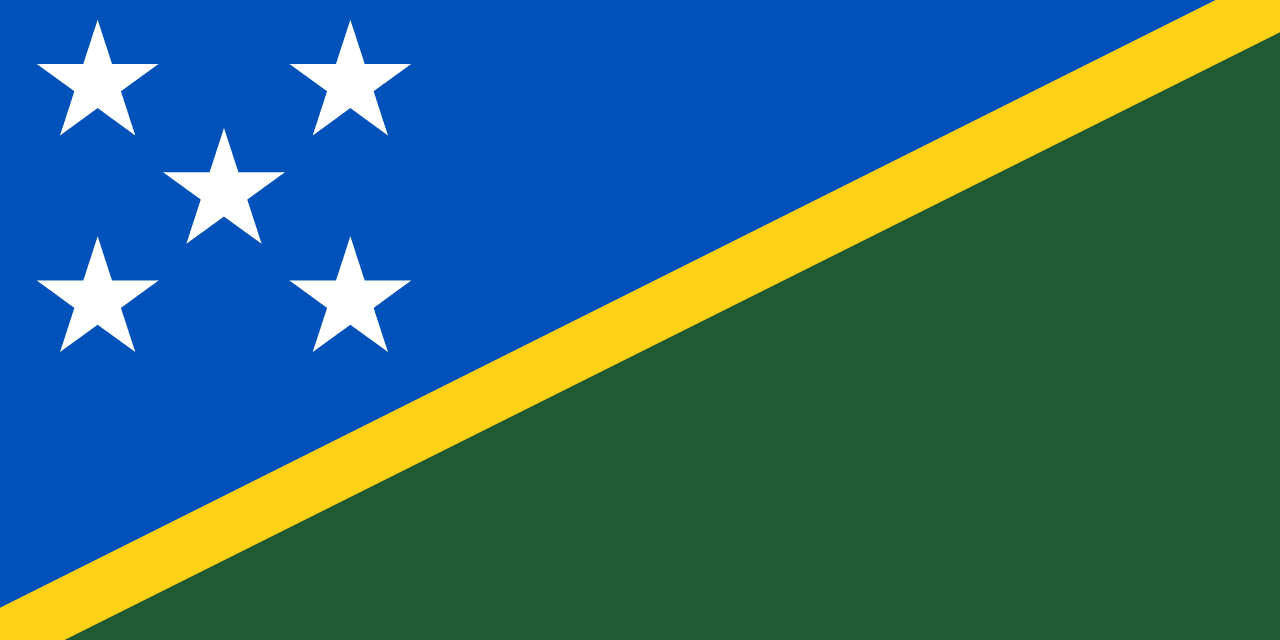
Symbolism
Blue Triangle: Represents the Pacific Ocean that surrounds the Solomon Islands and defines life on these remote islands, symbolizing the marine environment that provides food, transportation, and cultural identity.
Green Triangle: Represents the rich, fertile land covered by tropical rainforests, symbolizing the vegetation and agricultural potential that sustains the population and the natural environment.
Yellow Diagonal Stripe: Represents the sunshine that blesses the tropical islands year-round, symbolizing the bright future and hope for prosperity in the independent nation.
Five White Stars: Represent the five main island groups or provinces of the Solomon Islands: Choiseul, Western, Central, Guadalcanal, and Malaita, symbolizing unity among the diverse islands and peoples.
X-Pattern Arrangement: The stars are arranged in an X formation within the blue triangle, representing the Southern Cross constellation that guides Pacific navigators and the geographic spread of the island groups.
History
- Pre-European Era: Melanesian peoples settled the islands around 30,000 years ago, developing sophisticated seafaring cultures, trade networks, and diverse languages across the scattered island groups.
- 1568: Spanish explorer Álvaro de Mendaña named the islands after the biblical King Solomon, believing he had found the source of Solomon's gold, though sustained European contact would not occur for centuries.
- 1800s-1890s: European traders, missionaries, and labor recruiters ('blackbirders') arrived, disrupting traditional societies while introducing Christianity and Western goods and diseases.
- 1893-1900: Britain established the British Solomon Islands Protectorate, gradually extending control over the scattered islands while allowing traditional governance structures to continue in many areas.
- 1942-1943: The Solomon Islands became a major World War II battleground, with fierce fighting on Guadalcanal between Japanese and Allied forces, fundamentally changing island society.
- 1945-1975: Post-war reconstruction brought expanded education, healthcare, and economic development, while growing political awareness led to demands for self-government and eventual independence.
- January 2, 1976: The Solomon Islands achieved self-government with Peter Kenilorea as Chief Minister, beginning the final transition to full independence from British colonial rule.
- July 7, 1978: The Solomon Islands gained independence from Britain, adopting the current flag and establishing parliamentary democracy under Prime Minister Peter Kenilorea.
- 1998-2003: Ethnic tensions between Guadalcanal and Malaita peoples erupted into civil conflict, collapsing government institutions and requiring Australian-led international intervention to restore order.
- 2003-2017: The Regional Assistance Mission to Solomon Islands (RAMSI) helped rebuild institutions, restore law and order, and strengthen democratic governance with significant Australian and regional support.
- 2019-2021: Political tensions over the government's switch of diplomatic recognition from Taiwan to China led to riots and anti-government protests, highlighting ongoing governance challenges.
- 2021-Present: The Solomon Islands has faced criticism for security agreements with China while dealing with climate change threats, economic challenges, and the need for sustainable development.
Trivia
- The Solomon Islands consists of nearly 1,000 islands scattered over 1.35 million square kilometers of ocean, though only about 347 are inhabited by the 700,000 population.
- The flag represents one of the world's most linguistically diverse countries, with over 60 indigenous languages spoken across the different island groups and cultures.
- English is the official language, but Solomon Islands Pijin serves as the lingua franca, allowing communication between speakers of different indigenous languages.
- The country was the site of some of the most intense fighting in the Pacific during World War II, with the Battle of Guadalcanal being a turning point in the war against Japan.
- Traditional culture includes distinctive art forms like wood carving, shell money production, and traditional dances that vary significantly between different island groups.
- The flag flies over a country extremely vulnerable to climate change, with rising sea levels threatening low-lying atolls and more frequent cyclones damaging infrastructure.
- Solomon Islands' economy depends heavily on logging, fishing, palm oil, and agriculture, though unsustainable practices have created environmental concerns and economic challenges.
- The country is part of the 'Ring of Fire' and experiences frequent earthquakes and volcanic activity, with several active volcanoes across different islands.
- Traditional society is largely based on extended family groups (wantoks) and customary land ownership, with about 87% of land held under traditional tenure systems.
- Christianity is practiced by about 97% of the population, with various denominations coexisting alongside some traditional spiritual practices and beliefs.
- The capital Honiara on Guadalcanal is home to about 85,000 people, while most of the population lives in small rural villages scattered across the islands.
- Traditional foods include sweet potato, taro, cassava, fish, and coconut, with different islands having distinct culinary traditions adapted to local resources.
- The flag represents a country rich in marine biodiversity, with coral reefs, tuna fishing grounds, and unique species that attract both commercial fishing and eco-tourism.
- Solomon Islands faces significant development challenges including limited infrastructure, geographical isolation, vulnerability to natural disasters, and dependence on foreign aid.
- Despite challenges, the country maintains strong cultural traditions, democratic institutions, and regional relationships while navigating between major power interests in the Pacific.
Related Countries
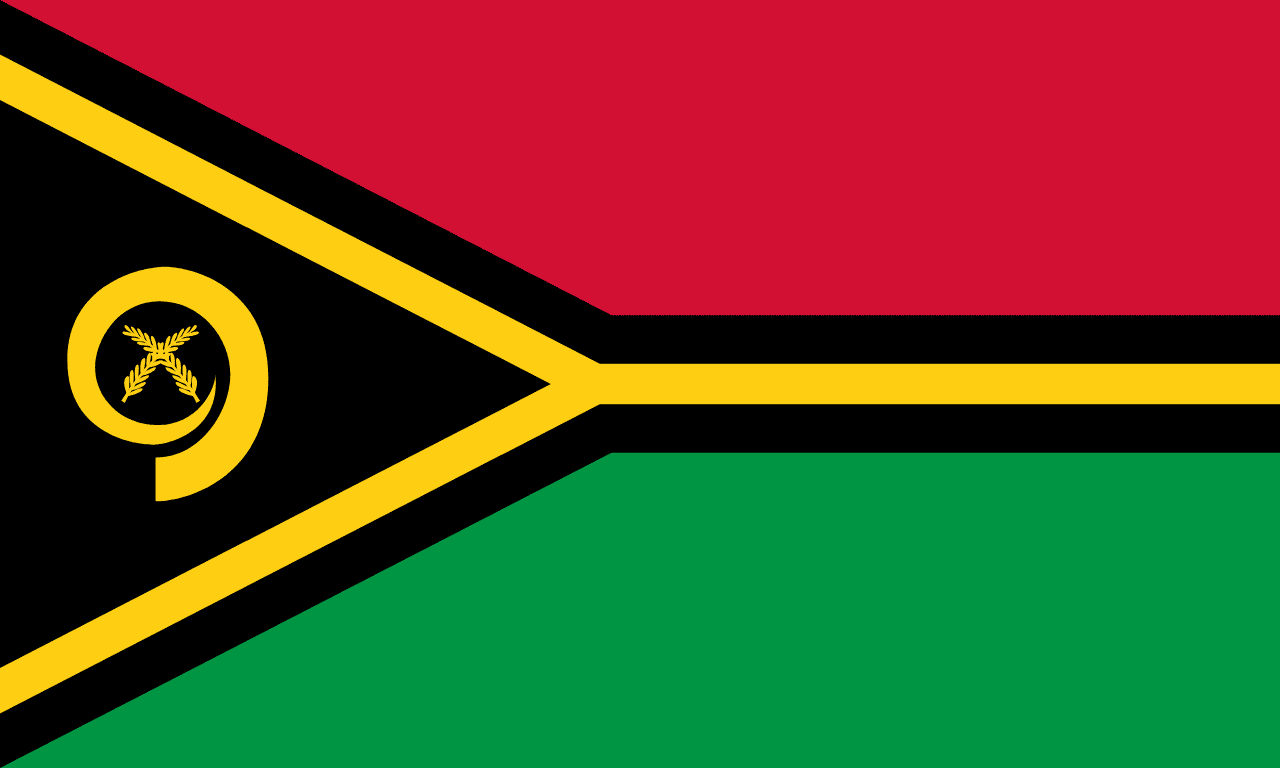
Vanuatu
Oceania
Red and green horizontal bands separated by a black stripe edged in yellow, with a yellow Y-shape extending from the hoist containing a boar's tusk and two crossed fern leaves, representing the blood of sacrifice, the rich soil, the Melanesian people, enlightenment, and traditional Melanesian values and culture.
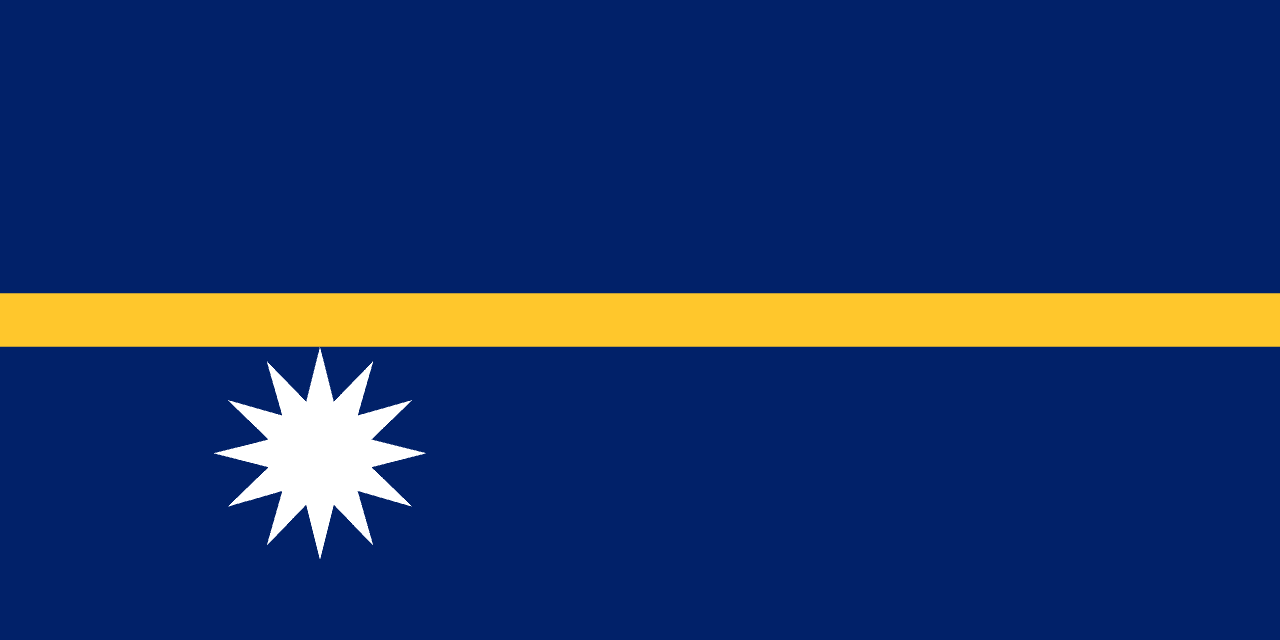
Nauru
Oceania
A blue field with a horizontal yellow stripe across the center and a white twelve-pointed star below the stripe near the hoist. The design reflects Nauru’s position just south of the equator and its cultural identity.
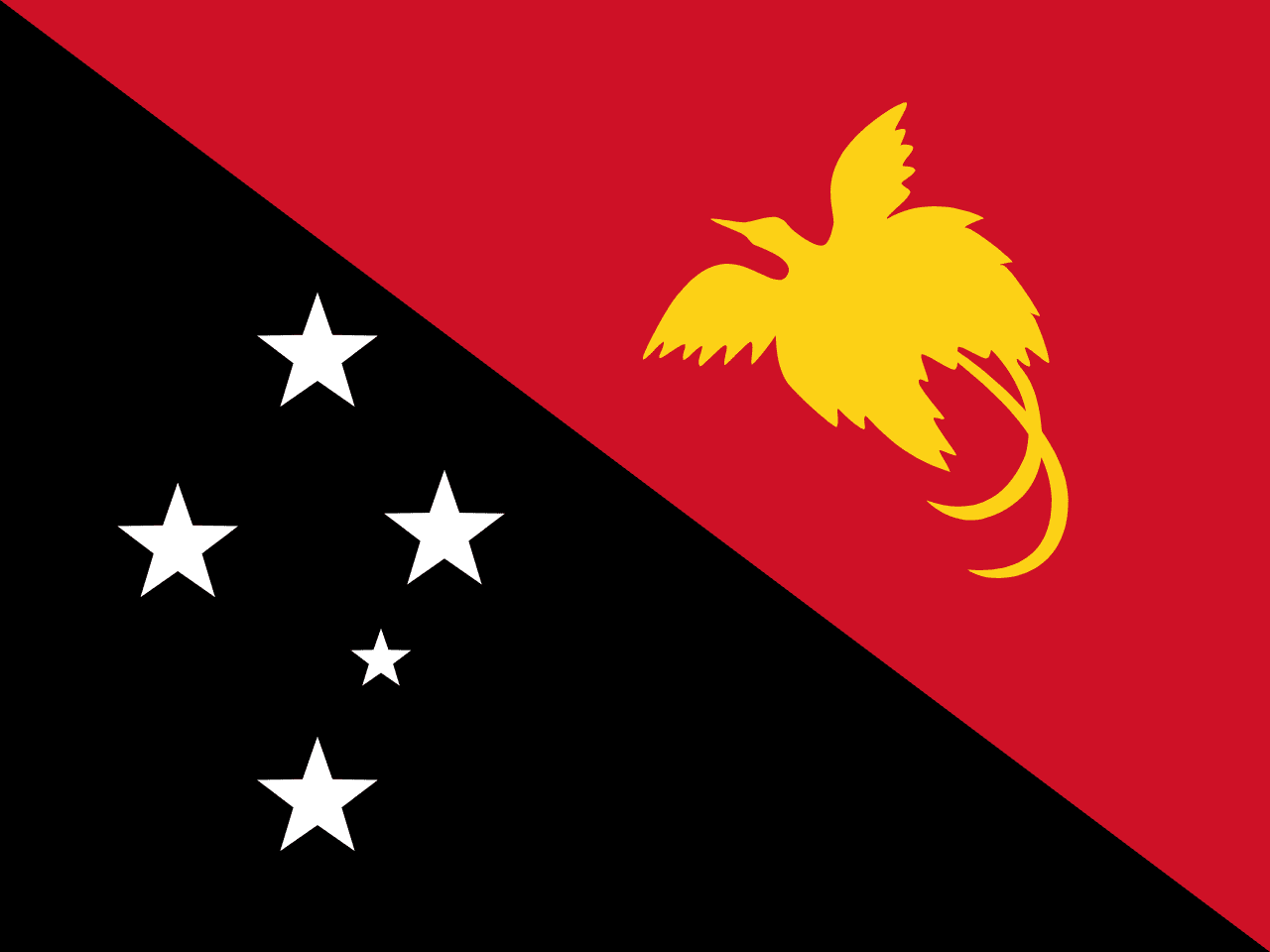
Papua New Guinea
Oceania
Divided diagonally from upper hoist to lower fly: the upper triangle is red with a yellow Raggiana bird-of-paradise, and the lower triangle is black with five white stars of the Southern Cross.
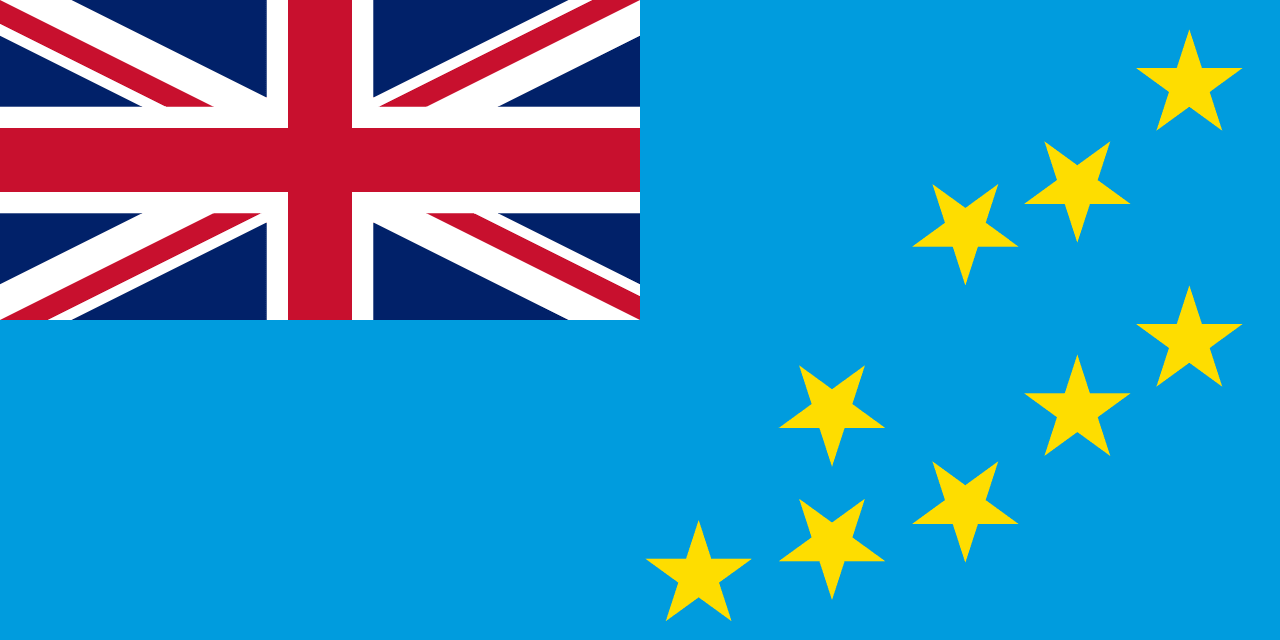
Tuvalu
Oceania
A light blue field with the Union Jack in the canton and nine yellow stars representing the nine atolls of Tuvalu, symbolizing the Pacific Ocean that surrounds the islands, the historical connection to Britain, and the geographical arrangement of the island nation in the central Pacific.
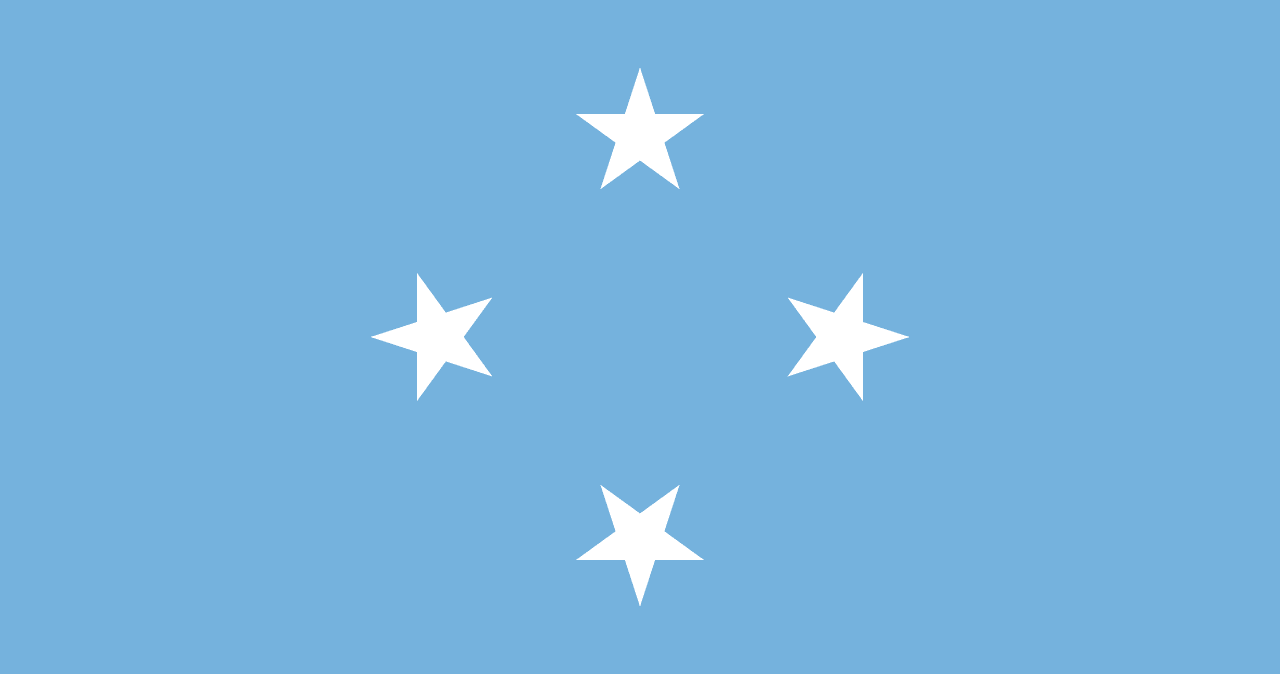
Micronesia
Oceania
Four white five-pointed stars arranged in a diamond pattern on a light blue field, representing the four states of the Federated States of Micronesia surrounded by the Pacific Ocean.
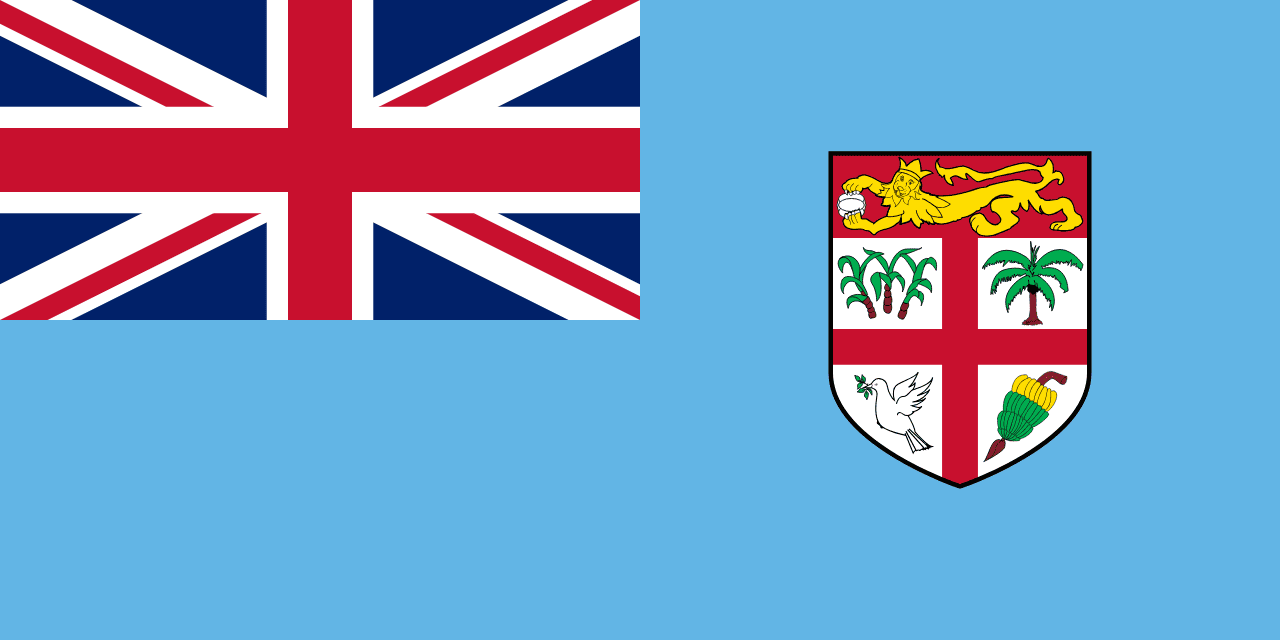
Fiji
Oceania
A light blue field with the Union Jack in the canton and Fiji's coat of arms on the fly side, representing the Pacific Ocean, British heritage, and the agricultural and maritime traditions of this island nation.